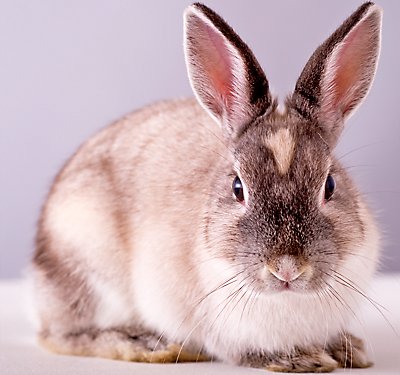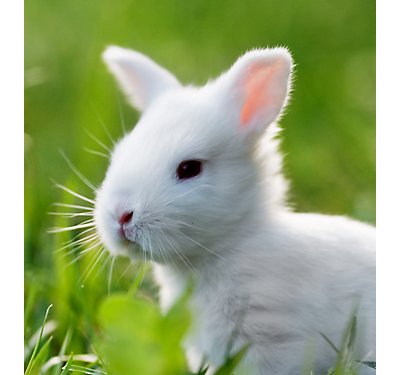
 top
top
Overview
Bringing bunnies home is an exciting experience. Rabbits are fun, interesting, active pets that can make wonderful companions. They do best in pairs, since they’re highly social creatures. However, bunnies need a fair amount of space to live, play and exercise, so it’s wise to get up to speed on the best bunny habitats before you bring home your long-eared friends.
Choosing the right space
As you consider where to locate your bunny habitat, keep these points in mind.
- Enough space: Bunnies can weigh anywhere from 2 to 15 pounds, depending on the breed. The bigger your bunny, the more room they’ll need to roam and play. A bunny habitat of 3m x 2m x 1m high (roughly 10ft x 6ft x 3ft high) is the minimum recommended space for two rabbits, but more space is always better.
- A quiet area: Rabbits can be highly sensitive to noise, so it’s best to choose a calm, quiet area away from busy rooms and loud appliances.
- Moderate temperatures: Bunnies are sensitive to temperature extremes. A climate-controlled space where the temperature is 60 to 70°F (15 to 21°C) is ideal for bunny habitats.
Types of bunny habitats
The right habitat for you and your bunnies depends on the amount of space you have and how safe your environment is for your rabbits.
- Rabbit hutches or cages: a wire cage or hutch with a solid bottom can make a suitable bunny habitat. It should be large enough for your furry friends to move around comfortably and take several hops.
- Exercise pens: Pens are a flexible option that offer more room and can be configured in different shapes to fit the available space.
- Bunny-safe rooms: To give your bunnies the most room to roam, you may choose to safety proof a room or section of your house.
Bunny habitat supplies
Once you’ve decided on where to locate your bunny’s habitat, you’ll need to attend to essential care supplies like flooring, litter & bedding, and a few other things before introducing your bunny to its new home.
- Flooring: Rabbits have furry feet with no pads, so they can easily slip and slide on smooth surfaces. The best flooring for your bunny habitat is a soft, non-slip material like a rug or piece of fleece. Don’t use wire flooring, as it can be painful for your rabbit’s feet.
- Bedding: Rabbits like a private sleeping area where their naptime won’t be disturbed. The ideal bunny pet bed is something that feels like a burrow – a covered area with an entrance, an exit route and a soft, fleecy blanket inside.
- Litter: Most rabbits can be easily litter trained. Fill a litter tray with newspaper, hay or straw, shredded paper, or non-clumping cat litter. Change the litter box daily and clean the entire bunny habitat weekly.
- Hay rack: Always make fresh hay available for your bunny – it’s important for their digestion and dental health.
- Food and water bowls: Heavy, tip-proof bowls are ideal for your bunny’s food and water.
- Places to hide: Bunnies are a prey species, so they only feel comfortable when they have places to hide like tunnels, cardboard boxes, or little hideaways.
- A digging box: Bunnies love to dig and forage. A digging box filled with chinchilla sand and hay will help satisfy their natural instincts.
- Toys: Chew toys, balls, and tunnels help keep your bunny engaged and mentally stimulated. Regularly rotating toys helps maximize interest.
How to rabbit proof your home.
Whether you choose to let your bunnies play occasionally in certain rooms or roam freely throughout a section of your home, you’ll want to take several steps to ensure their safety.
- Shield electric wires: Rabbits commonly chew through roots in the wild while burrowing, and they’re likely to do the same with any wires and cables they come across. To keep your bunny safe, cover wires and cable with cable protectors.
- Eliminate escape routes: Rabbits can squeeze through small openings – be sure to check all rooms for any ways they might escape.
- Raise your houseplants: Many common houseplants are poisonous for rabbits, so it’s best to keep all indoor plants out of reach.
- Prevent choking hazards: Any small object can be a potential choking hazard for your bunnies. Be sure to keep floors and low surfaces clear of small items.
FAQs.
How big should my rabbits' living space be?
At minimum, bunny habitats should be 3m x 2m and 1m high. That’s roughly 6’ x 10’ and 3’ high. However, the more space you give your bunny, the happier it will be.
How much exercise do bunnies need?
Rabbits are active animals and need lots of opportunities for exercise. Whether it’s indoors or outdoors, an exercise area should be large enough for your bunnies to run and hop, and free of hazards like toxic plants or cables they can chew through.
How often should I clean my bunny habitat?
Clean the litter box daily and the entire habitat once each week. Be sure to use pet-safe cleaners and disinfectants.
Related Articles.
Need other pet supplies while you’re shopping for bunny habitats? PetSmart also carries pet beds for rabbits, rabbit food, tunnels & hideouts, and much more.
PetSmart also offers convenient shopping with Curbside Pickup or in-store pickup. Need something today? We have select items available for Same-Day Delivery in most areas powered by DoorDash. For items you purchase frequently, PetSmart has Autoship that automatically delivers the items you want to your door as often as you’d like. Check the website to see which items are eligible.
Information in this article is not intended to diagnose, treat or cure your pet and is not a substitute for veterinary care provided by a licensed veterinarian. For any medical or health-related advice concerning the care and treatment of your pet, contact your veterinarian.


























